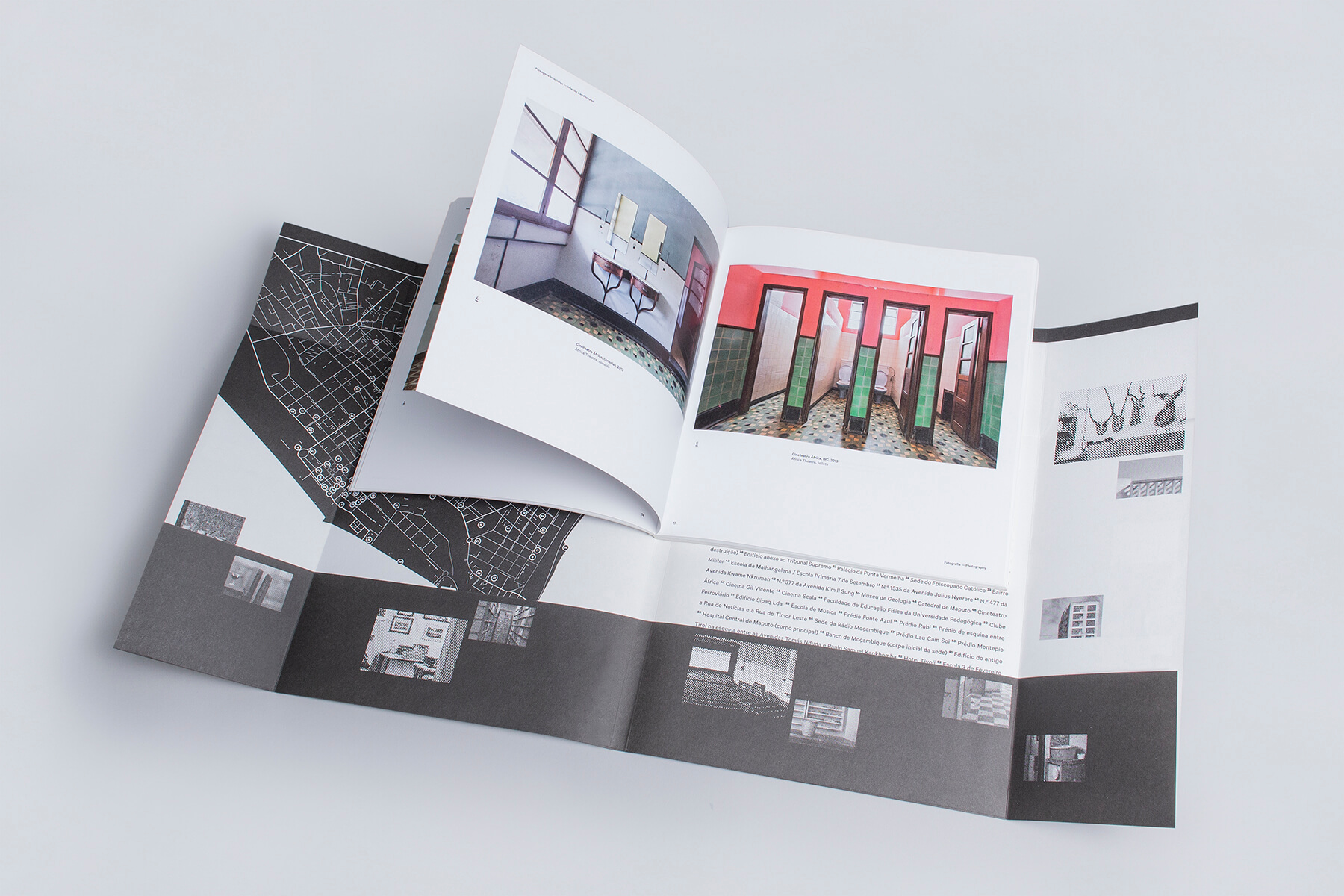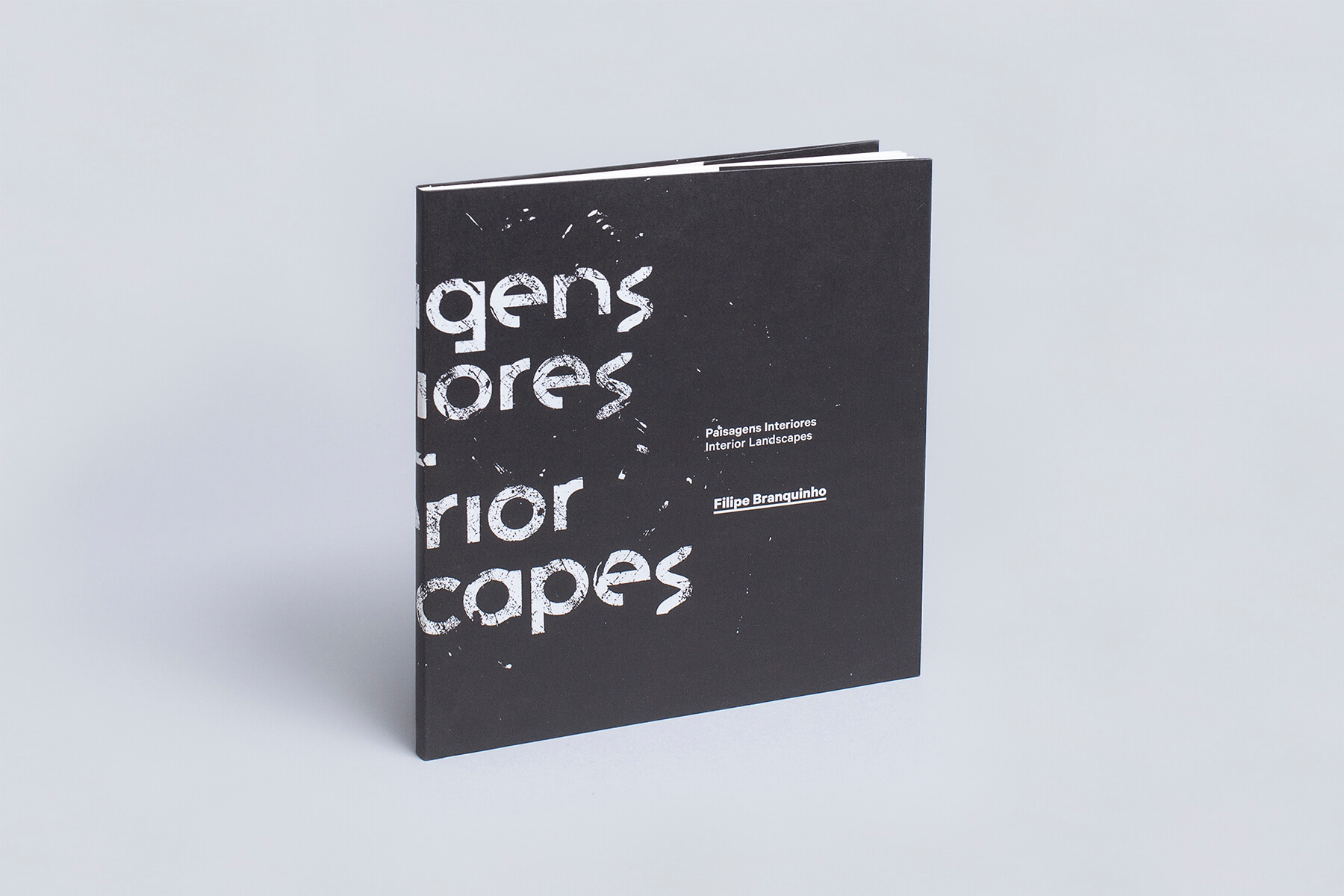This catalogue accompanies the exhibition Interior Landscapes by the photographer Filipe Branquinho, which was on view at the Portuguese Cultural Centre/Embassy of Portugal in Maputo, Mozambique, between November 2015 and January 2016, and subsequently at Gallery Av. da Índia, between March 24 and June 5, 2016. This volume features texts by Alexandra Pinto, Joana Gomes Cardoso, José Carrilho, José Forjaz, José Pinto de Sá, Mia Couto, and an interview with Filipe Branquinho by Sandra Vieira Jürgens.
“Distancing himself from a conventional documental record and from attempting to reveal iconic city buildings, in the series of thirty photographs Interior Landscapes Branquinho starts a journey through the public and semi-public spaces of the city, generally the inside of the buildings saturated of traces and arcades, with history and clues, a permanent oscillation between present and past that catches the eye. Cinemas, radio stations, associations, archives, schools and swimming pools are revisited, nostalgia-free, by the observing, and loving, and clean photographer vision.”
– Alexandra Pinho
“The landscapes we see in this exhibition do take us on an interior journey. The contemporary nature of the photographs, the banality of many of the actions portrayed, contrast with the evoked past and with the emotions that may be triggered in those who have memories of these places.”
– Joana Gomes Cardoso
“Branquinho’s look is that of a photographer and an architect. But it is, above all, the look of someone who knows that a beautiful image may say what words forget to say. By the hand of Filipe Branquinho we share the same kinship: city draughtsmen with neither geography nor map.”
– Mia Couto
“Sandra Vieira Jürgens: I must point out an important aspect, one which is evident in this series: the presence of places and buildings combining simultaneous references to past and present. Is that deliberate and conscious?
Filipe Branquinho: I’ve photographed places that keep traces of different times, noticeably in what comes to building materials and techniques, colour, furniture, equipment, work-related and decorative objects. When this evidence coexists, changes and periods through which a building has gone are easier to understand, and narratives over a given space are then built.”
– Sandra Vieira Jürgens and Filipe Branquinho
“Beyond functionality, sometimes the epidermic expression of architecture results from a process through which a veil is sought after as one of the character-defining elements of the building or, as a whole, as an intrinsic element of the search of the city’s diverse identities.”
– Júlio Carrilho
“The greatest strength of these powerful images comes exactly from what they leave to the observer: the responsibility of feeling them as part of their imaginary universe… Or of a maybe unimaginable world that will leave them feeling a perplexity fuelled by the sporadic, random record of a universe of subtle truths, discovered and aligned with a sense that the photographer must make us find: the poetical intensity of the most commonplace, prosaic, spaces and moments through which we go, deaf and blind.”
– José Forjaz
“I live in Karl Marx Avenue, on the sixth floor of a building with entresol and no lift. The light on the stairs is always on. On each floor the light is brutal, but the landings are shady, on one the words “Begging for fewer stairs” graffitied on the wall. Up to the sixth floor I know every step, I even know where to find the biggest chuinga stains in the yellow granulite.”
– José Pinto de Sá





